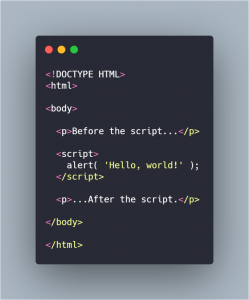JavaScript Charting Libraries: Nowadays, the amount of data generated is growing exponentially high speed than ever before. As a result, data is harder than ever before to process. This is the reason why interactive data visualizations are required so that useful information can be extracted to make decisions.
Data visualization tools like charts and dashboards save time in decision making as it provides instant visualizations.
What kind of application one may be building or exists, the use of JavaScript is something that developers cannot deny today. This is because JavaScript is so versatile and easy to use.
Similarly, for visualizing data in applications, JavaScript provides a lot of platforms. These platforms are known as JavaScript charting libraries.
If you are wondering what wonders you can create with JavaScript, follow the link given below:
Bhutan IO: JavaScript and Its Wonders…
Without more ado, let me share the top 05 charting libraries for data visualization in 2020!
JavaScript Charting Libraries List
1. amCharts
A go-to library for data visualization. When you don’t have time to learn new technologies. When you need a simple yet powerful and flexible drop-in data visualization solution. Includes all basic and advanced chart types, as well as is extendable by additional plugins like Maps and TimeLine.
amCharts
Features
- Supports all chart types, including geographical maps.
- A drill-down feature along with other great interactivity options.
- Animated charts
- It can be integrated with JavaScript frameworks like AngularJs, VueJs, Bootstrap, etc.
- Provides an option to export as an image or pdf
Drawbacks
- Free for any use, but all charts include a small, branded link. To remove the amCharts attribution, one must buy licence(s).
Related Links
2. Chart.Js
Chart.js is a simple yet quite flexible JavaScript library for data visualization, popular among web designers and developers.
It’s a great basic solution for those who don’t need lots of chart types and customization features but want their charts to look neat, clear, and informative at a glance.
Features
- Open-source and community-maintained project.
- 8 animated and customizable chart types.
- Great performance over all the modern browsers.
- Responsive charts – Redraws charts on window resize for perfect scale granularity.
Drawbacks
- It provides only 8 types of charts.
Related Links
3. D3.js
D3.js is a JavaScript library for manipulating documents based on data. D3 helps you bring data to life using HTML, SVG, and CSS. D3’s emphasis on web standards gives you the full capabilities of modern browsers without tying yourself to a proprietary framework, combining powerful visualization components and a data-driven approach to DOM manipulation.
Data-Driven Documents
Features
- Supports numerous chart types, much more than the vast majority of the other JavaScript charting libraries (e.g. Voronoi diagrams).
- Easy to learn
- Hundreds of examples.
Related Links
4. FusionCharts
FusionCharts is another good interactive charting library with hundreds of charts ready for use. The charts accept both JSON and XML data formats and are rendered via HTML5/SVG or VML.
Features
- It provides animated and interactive 100+ charts and 2000+ maps.
- It can be integrated with jQuery, Angular, Vue, etc.
- Export to PNG, JPG or PDF format.
Related Links
5. Plotly
Built on top of d3.js and stack.gl, Plotly.js is a high-level, declarative charting library. plotly.js ships with over 40 chart types, including 3D charts, statistical graphs, and SVG maps.
Plotly
plotly.js is free and open source and you can view the source, report issues or contribute on GitHub.
Features
-
plotly.jsabstracts the types of statistical and scientific charts that you would find in packages like matplotlib, ggplot2, or MATLAB. - Highly customizable, animated and high performance.
- Exporting charts to PNG and JPG; EPS, SVG, and PDF are available on subscription.

